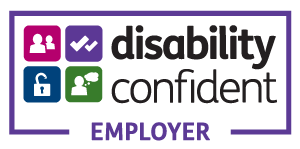As a manager in optical practice, you are the cornerstone of your team’s culture. You set the tone, enforce the standards, and, most importantly, create an environment where every staff member feels safe, valued, and respected. However, recent findings from the General Optical Council (GOC) have brought a stark reality into focus: harassment, bullying, and discrimination are pervasive issues within the optical sector, casting a shadow over the well-being of dedicated professionals.
This is not simply a compliance issue; it’s a strategic imperative. A negative workplace culture can have a direct impact on your team, your patients, and your practice’s bottom line. This guide provides a clear roadmap for optical practice managers, offering actionable strategies to address these challenges head-on and cultivate a genuinely positive and resilient workplace culture.
The Detrimental Impact Of a Toxic Optical Workplace

While harassment is a moral and ethical failing, it also has a tangible effect on business performance. The GOC's Registrant Workforce and Perceptions Survey revealed that many optical professionals have faced mistreatment in the workplace. Instances reported included physical, verbal, or cyber-bullying; discrimination on the grounds of gender, religion, race, or sexuality; workplace harassment, frequently of a sexual nature; and abusive language or aggressive behaviour from patients. This isn't just about emotional distress; it's a direct threat to your practice's productivity.
In an industry where teamwork and collaboration are essential, staff who face mistreatment often struggle to focus on delivering high-quality patient care. Instead, their focus shifts from providing excellent patient care to managing a hostile environment. Over time, this can lead to:
Reduced Engagement and Motivation
Employees who feel undervalued or disrespected are far less likely to be engaged with their work or committed to the practice's goals. This can manifest as a lack of initiative, disinterest in professional development, and a general feeling of disillusionment.
Increased Absenteeism and Staff Turnover
A toxic environment drives staff away. The research noted that job satisfaction is dipping, and many professionals are considering leaving the sector entirely. High turnover is expensive, time-consuming, and disrupts team cohesion and continuity of patient care.
Mental Health Impact
The constant stress of a hostile work environment takes a severe toll on an individual’s mental health. Professionals subjected to harassment and bullying often experience increased levels of anxiety, stress, and even depression. This emotional and psychological burden can make it difficult for them to focus, think clearly, and maintain the resilience needed to perform their duties effectively, leading to burnout.
Impaired Patient Care
The personal toll of mistreatment can directly impact a professional's ability to provide safe and compassionate care. A practitioner who is stressed or anxious may be unable to give their full attention to a patient, potentially compromising the quality of the service provided.
Ultimately, unaddressed negative behaviours create an "unseen cost" to your practice, eroding morale and undermining the very foundation of your business.
Strategies to Create a Positive Workplace Culture

Building a positive, resilient workplace is not an overnight task; it is an ongoing commitment that carries both moral and legal weight for managers. Beyond improving morale, healthcare managers have a statutory duty to ensure the safety of staff, encompassing both physical and psychological well-being. Employers in the UK are bound by the Equality Act 2010 to prevent discrimination and create inclusive environments. They must also uphold their duty of care to protect staff from harm. By taking a proactive and structured approach, practices can build a culture where every member of staff thrives while meeting these critical responsibilities.
Practical steps for managers include:
1. Establish a Robust Policy Framework
Your first step is to establish clear and non-negotiable boundaries.
Implement a Zero-Tolerance Policy: Create a clear, written policy that explicitly defines what constitutes harassment, bullying, and discrimination. Ensure it covers all forms of mistreatment, from verbal abuse to inappropriate comments on social media. This policy should be a non-negotiable part of every employee's contract.
Mandate Regular Training: Initial training is essential, but ongoing education is critical. Schedule regular sessions on topics like unconscious bias, respectful communication, and conflict resolution. Consider incorporating real-world scenarios relevant to an optical practice to make the training more impactful.
Clarify a Code of Conduct: A simple, yet powerful, code of conduct can set the tone for your practice. It should outline the expected professional behaviours and ethical standards for all staff.
2. Foster Open Communication and a Safe Reporting Process
Creating a safe space for your team to speak up is crucial. The GOC’s research found that a lack of clear reporting pathways and a fear of retaliation were major barriers.
Promote an Open-Door Culture: Go beyond simply saying your door is open. Use regular one-to-one check-ins to create a safe space for your team to discuss any concerns, not just work-related ones. When someone comes to you, listen without judgement and assure them their confidentiality will be protected.
Establish Clear, Accessible Reporting Channels: Ensure every team member knows exactly who to talk to if they experience or witness a problem. This might be directly to you, a designated senior partner, or an external HR resource. The process must be simple, well-communicated, and easy to follow.
Leverage Employee Surveys: Consider implementing anonymous surveys to gauge morale and identify potential issues before they escalate. This can provide valuable insights into underlying tensions or systemic problems that employees may not feel comfortable discussing directly.
3. Respond with a Fair, Structured Approach
When an allegation is made, your response must be immediate, objective, and consistent. Your handling of these situations will significantly impact trust and the overall perception of fairness within your practice.
Listen Actively and Document Thoroughly: Take every report seriously. Listen carefully to the individual's account, allowing them to share their full story without interruption. Document all relevant details meticulously: dates, times, specific words or actions, location, witnesses, and the impact of the incident. Maintain strict confidentiality.
Conduct a Prompt and Impartial Investigation: As soon as an incident is reported, initiate a thorough and fair investigation. This involves interviewing all parties involved (complainant, alleged perpetrator, witnesses) and gathering any supporting evidence (e.g., emails, CCTV footage, communication logs). It is vital to remain neutral throughout the process, focusing solely on the facts.
4. Decisive Action and Sustained Support
After a thorough investigation, decisive action is crucial to reinforce your practice's values and policies.
Administer Appropriate Disciplinary Action: Based on the investigation's findings, take disciplinary action that is proportionate to the offence and consistent with your practice's policies. This could range from formal warnings to dismissal for gross misconduct. Consistency across similar incidents is vital for demonstrating fairness and upholding the integrity of your policies.
Provide Support and Follow-Up: Offer support to all affected parties. This might include access to counselling services or employee assistance programmes. Crucially, follow up with the individual who made the report to assure them that appropriate action has been taken (without disclosing confidential disciplinary details) and to ensure the negative behaviour has ceased.
Review and Learn: Use incidents as learning opportunities. What contributed to the problem? How can systems or training be improved to prevent recurrence? Regularly review your policies and procedures to ensure they remain effective and fit for purpose.
Conclusion
As an optical practice manager, your commitment to tackling harassment at work, bullying, and discrimination is more than just a managerial responsibility – it's a critical investment in the future of the profession. By building a culture where respect, safety, and inclusion are paramount, you not only protect your current team but also make your practice an attractive destination for top talent.
Partner with Us to Build a Positive Optical Team
At Verovian Optical Recruitment Agency, we understand that the strength of your practice depends on the quality of your team. That’s why we specialise in connecting practices across the UK with highly skilled, carefully vetted optical professionals who can make an immediate impact.
We ensure every candidate we provide is not only exceptional in their clinical expertise but also committed to fostering a positive and respectful workplace culture. Partner with us to build a resilient, high-performing team that elevates your practice and delivers outstanding patient care. Get in touch with us today to start recruiting top optical talent for your practice.






